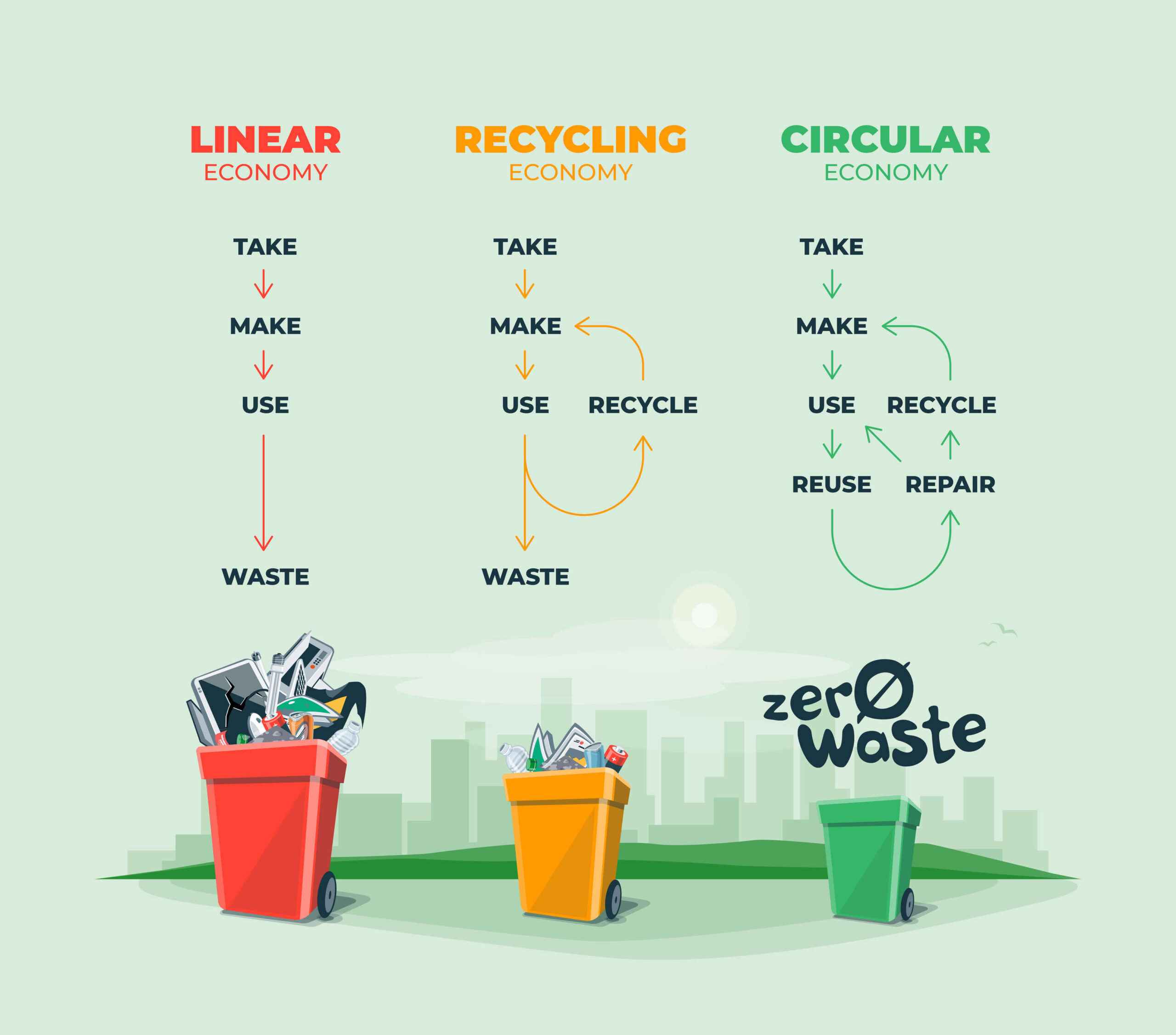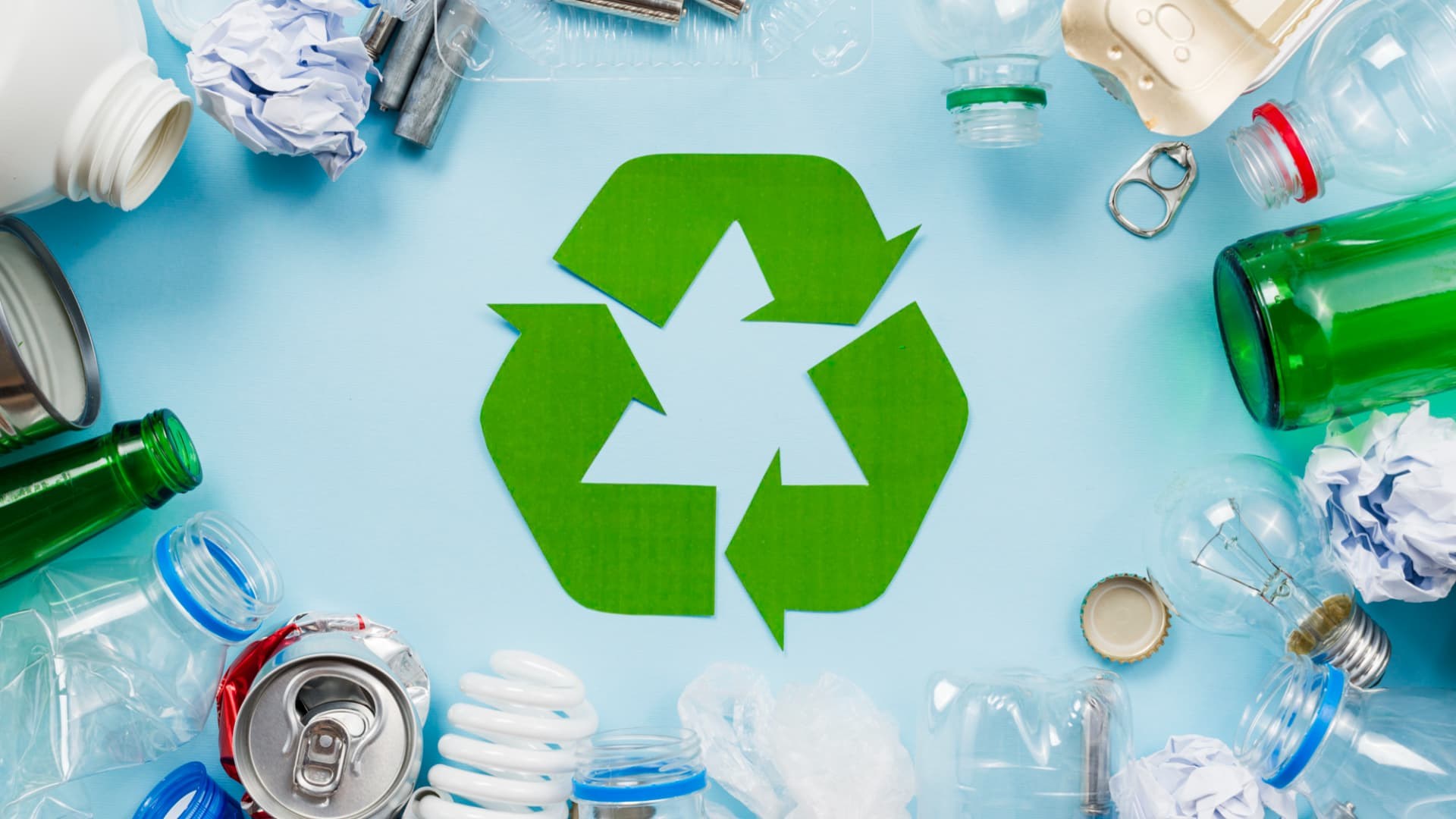Recycling Lives Services: A Full Remedy for Company Recycling
Recycling Lives Services: A Full Remedy for Company Recycling
Blog Article
Recognizing the Classification and Handling of Numerous Sorts Of Waste
Effective waste monitoring is critical for environmental sustainability, calling for a detailed understanding of the classification and handling of different waste kinds. Household waste, industrial by-products, unsafe materials, electronic refuse, and organic residues each demand distinctive procedures to guarantee safety and security and reduce ecological damage. Implementing appropriate segregation, treatment, and disposal strategies is necessary to minimize unfavorable environmental influences and promote source conservation. As an example, the composting of natural waste contrasts dramatically with the complex procedures required to handle unsafe substances. This diverse method to throw away administration highlights its intricacy and the vital demand for specialized knowledge in this domain.

Family Waste
Home waste, encompassing a broad array of disposed of products generated from daily living tasks, represents a considerable part of the total waste stream - recycling lives services. This classification consists of organic waste such as food scraps, backyard clippings, and paper products, alongside inorganic products like plastics, metals, and glass. The varied nature of home waste necessitates reliable category and management to reduce ecological impact and promote sustainable living methods
Reliable family waste management begins with segregation at the resource, promoting recycling, composting, and secure disposal. Organic waste, as an example, can be composted to generate nutrient-rich dirt amendments, decreasing garbage dump burden and improving dirt wellness. Recyclable materials, consisting of paper, glass, and particular plastics, can be processed and repurposed, reducing and saving resources energy usage related to new product production.
Moreover, harmful home waste such as batteries, digital tools, and cleansing chemicals needs specialized managing to stop dirt and water contamination. Public awareness projects and convenient disposal choices play crucial roles in ensuring correct disposal and recycling of these materials. By carrying out durable waste decrease methods and promoting community involvement, municipalities can significantly relieve the environmental footprint of household waste.
Hazardous Waste
Industrial waste, a significant factor to worldwide waste generation, includes a diverse variety of products produced by production, construction, and various other industrial tasks. This group consists of byproducts such as scrap metal, plastics, rubber, chemicals, and other deposits. The make-up and volume of hazardous waste can differ substantially depending on the industry and manufacturing procedures included. Effective monitoring of industrial waste is vital for reducing environmental impact and advertising sustainable methods.
The handling of hazardous waste commonly includes several procedures: collection, disposal, partition, and therapy. Collection systems are created to efficiently collect waste products from various sources within a commercial procedure. Segregation is important, as it ensures recyclable products are separated from non-recyclable ones, which can be guided towards suitable recycling or disposal channels. Treatment procedures, including physical, chemical, and organic methods, are utilized to minimize the toxicity, quantity, and ecological influence of the waste. Ultimately, disposal approaches like landfilling or incineration are utilized for waste that can not be recycled or dealt with.
Taking on methods such as waste minimization, resource healing, and recycling can substantially lower the burden of hazardous waste on the environment, adding to more lasting commercial methods.
Hazardous Waste

Destructive wastes can harm or damage living products and tissues. Combustible wastes can conveniently stir up, posing fire hazards, while reactive wastes can create explosions or launch harmful gases upon call with other substances.
Effective dangerous waste monitoring involves a number of key techniques: recognition and segregation of dangerous products, risk-free transport and storage space, and proper treatment and disposal. Therapy techniques may consist of chemical stablizing, neutralization, and incineration. Regulative compliance is crucial, directed by frameworks such as the Source Preservation and Recuperation Act (RCRA) in the United States, which guarantees eco sound and safe management of contaminated materials.
Digital Waste
Digital waste, usually abbreviated as e-waste, represents a growing obstacle in waste monitoring due to the rapid obsolescence of innovation. This classification includes a broad range of discarded digital devices, including mobile phones, computer systems, tvs, and family home appliances. The complexity have a peek here of e-waste depends on its structure; these items consist of a mixture of beneficial materials such as gold and copper, in addition to dangerous substances like cadmium, mercury, and lead.

Regulation and regulations, such as the European Union's Waste Electrical and Digital Equipment (WEEE) Instruction, objective to advertise liable e-waste management. These plans mandate suppliers to promote the collection and recycling of electronic items, thereby lowering the concern on land fills and reducing environmental contamination.
Organic Waste
Organic waste, including naturally degradable products such as food scraps, yard trimmings, and agricultural deposits, constitutes a substantial portion of the local strong waste stream. This kind of waste is remarkable not only for its quantity yet likewise for its potential environmental influence otherwise taken care of properly. Organic waste can decay anaerobically in landfills, producing methane, a potent greenhouse gas adding to environment adjustment.
Proper handling of organic waste includes click to read more a number of approaches. Composting is a commonly embraced method, changing organic materials right into beneficial garden compost that can improve dirt and support sustainable farming. This process also lowers the volume of waste sent out to landfills. Another technique is anaerobic food digestion, which damages down organic issue in the lack of oxygen, producing biogas that can be made use of as an eco-friendly power resource. Additionally, drawing away food waste from land fills via contribution programs can relieve food insecurity while decreasing waste.
Municipalities and services are significantly identifying the significance of organic waste administration. Carrying out thorough natural waste recycling programs not only alleviates ecological effects but likewise straightens with wider sustainability objectives, promoting a circular economy where resources are continuously recycled and repurposed.
Final Thought
Efficient waste monitoring and environmental security require an extensive understanding of the category and handling of various waste kinds. Carrying out proper techniques for each waste type makes sure responsible and risk-free waste administration techniques, ultimately adding to the security of ecosystems and public health and wellness.
Efficient waste monitoring is pivotal for ecological sustainability, needing an extensive understanding of the category and handling of numerous waste kinds.Household waste, encompassing a wide variety of discarded materials produced from everyday living activities, stands for a significant component of the total waste stream.Industrial waste, a significant factor to global waste generation, encompasses a varied array of products generated by manufacturing, construction, and other industrial activities (recycling lives services).Hazardous waste, an essential problem in waste monitoring, makes up materials that pose considerable dangers to human health and wellness and the atmosphere due to their poisonous, harsh, flammable, or responsive properties.Organic waste, encompassing naturally degradable materials such as food scraps, lawn trimmings, and agricultural deposits, makes up a substantial part of the metropolitan solid waste stream
Report this page